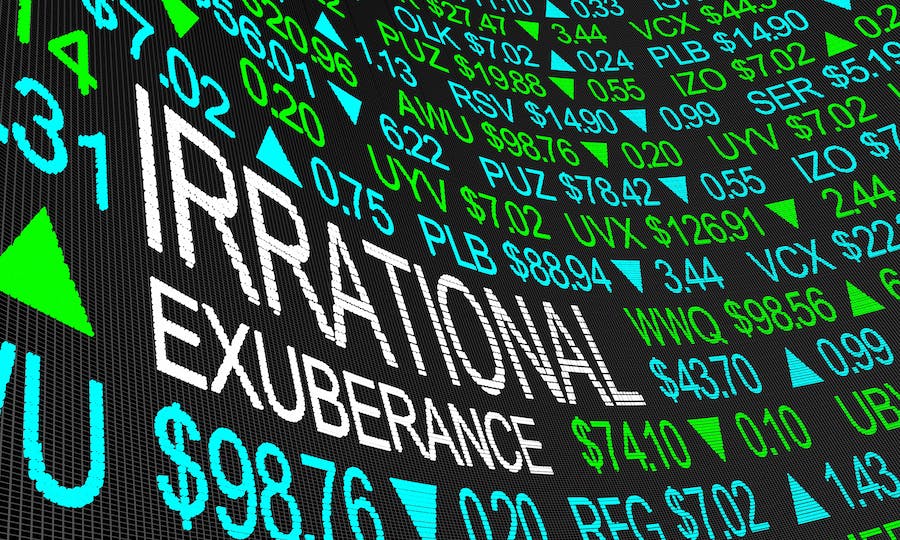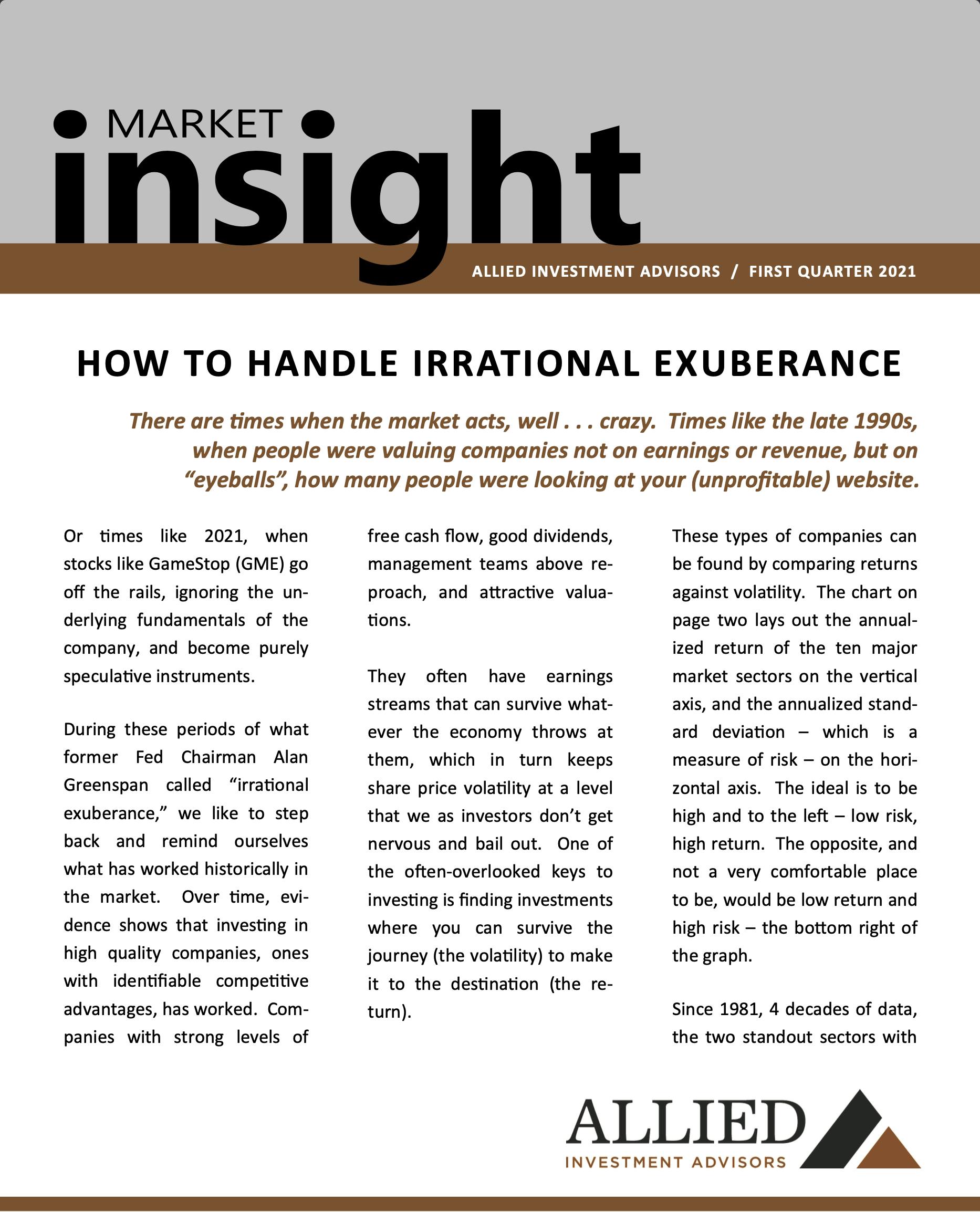Q1 2021: How to Handle Irrational Exuberance
February 9, 2021
There are times when the market acts, well . . . crazy. Times like the late 1990s, when people were valuing companies not on earnings or revenue, but on “eyeballs”, how many people were looking at your (unprofitable) website.
Or times like 2021, when stocks like GameStop (GME) go off the rails, ignoring the underlying fundamentals of the company, and become purely speculative instruments.
During these periods of what former Fed Chairman Alan Greenspan called “irrational exuberance,” we like to step back and remind ourselves what has worked historically in the market. Over time, evidence shows that investing in high quality companies, ones with identifiable competitive advantages, has worked. Companies with strong levels of
free cash flow, good dividends, management teams above reproach, and attractive valuations.
They often have earnings streams that can survive whatever the economy throws at them, which in turn keeps share price volatility at a level that we as investors don’t get nervous and bailout. One of the often-overlooked keys to investing is finding investments where you can survive the journey (the volatility) to make it to the destination (the return).
These types of companies can be found by comparing returns against volatility. The chart below lays out the annualized return of the ten major market sectors on the vertical axis, and the annualized standard deviation – which is a measure of risk – on the horizontal axis. The ideal is to be high and to the left – low risk, high return. The opposite, and not a very comfortable place to be, would be low return and high risk – the bottom right of the graph.

Since 1981, 4 decades of data, the two standout sectors with the highest return and lowest risk have been Consumer Staples and Health Care. Consumer Staples are companies that provide everyday essentials, like food, beverages, and household products. Health Care is the entire medical, pharma, and well-being complex. They may not be the most glamorous companies, but they provide consumable products, items we buy again and again. These are products we need in good times and bad, so they’re not only essential, but somewhat recession resistant. This gives them the unique combination of being long-term outperformers, while having much less risk than other sectors.
Consumer Staples is the only sector that, over any rolling 5-year period back to 1980, has never had a sustained drawdown (see graph below). While other sectors cycle up and down, the dependability of their sales pipeline has helped Staples to, at worst, have a flat 5 year period. Compare this to the Technology sector.
Technology does very well during bull markets and economic expansions, but in bear markets it can experience extended drawdowns and take years to recover. This is what happened to the tech heavy NASDAQ Index after the bubble burst in 2000 – spending nearly 15 years trying to climb back to breakeven (see graph below).

This isn’t to say you should only invest in Staples and Health Care - there are opportunities in other sectors. While Staples and Health Care can make up the core of your portfolio, there can also be opportunities in Finance, Industrials, and Communications, all of which provide good diversification and solid returns, with manageable risk. Technology and Consumer Discretionary have also provided good returns historically. At certain phases of the business cycle, you can find good value opportunities in these sectors, but be prepared for a wild ride and extended drawdowns should the cycle turn as these are the two most volatile sectors.
There is one glaring outlier on the “Sector Returns & Risk” graph: Energy. While its low return and high risk make it
look like an automatic avoid, there is an argument in favor of energy – in the right conditions. Energy is a cyclical commodity sector. While its volatility can work against you at times, there are scenarios, particularly when oil and gas prices are depressed, that it can work in your favor. After all, upside volatility really isn’t a risk, but a good thing. Taking strategic positions in Energy stocks when they’re attractively valued and out of favor has historically been a solid generator of returns. But like Technology and Consumer Discretionary, look out for when the cycle turns – the volatility can wipe out gains.

When the market divorces itself from fundamentals, and the college kids start asking you why you’re not making a fortune on fad stocks, it’s good to go back and look at the charts in this newsletter. While fortunes are made and lost (we emphasize and lost) on GameStop, we’ll stick to our mantra that boring is beautiful, and a solid generator of returns.
Names like Procter & Gamble (shampoo, hygiene products) and Johnson and Johnson (Tylenol, band-aids, pharma, medical devices) might not get the airtime on CNBC that some of the glamour IPOs and new-wave tech names do, but they can certainly surprise you over the long-term.
We’d be happy to sit down and discuss our long-term investment philosophy with you. We can also overlay how it impacts your personal long-term plans when it comes to financial planning, money goals, and retirement. We can go into more detail in a face-to-face or virtual meeting.
If you have any questions about your account(s), or if there has been a change in your financial situation or investment objectives, please feel free to contact any member of our team to schedule a meeting.

